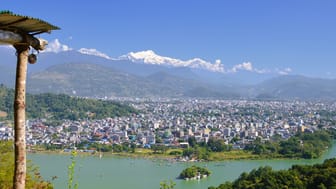Insider's View of the Poon Hill Trek
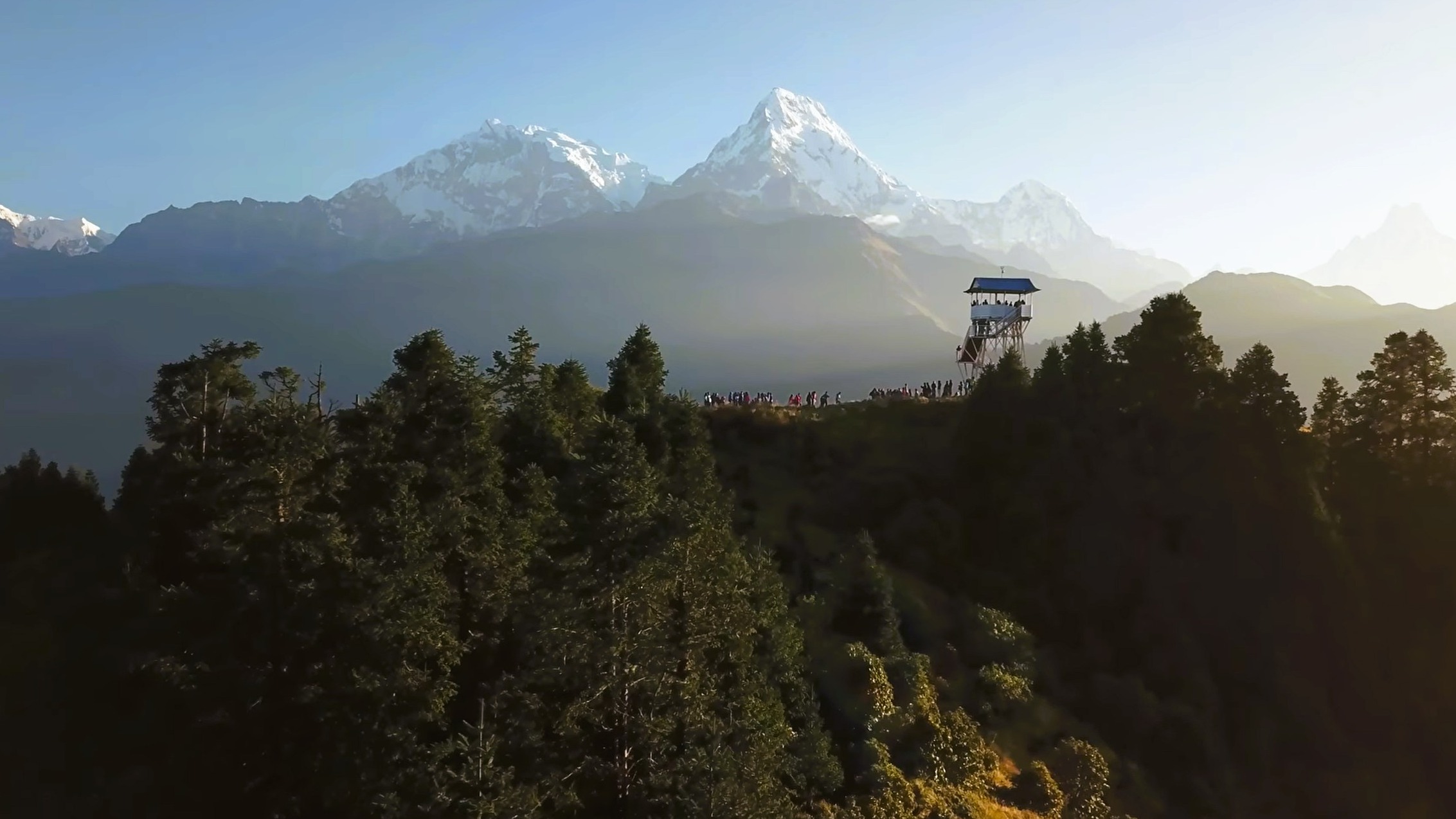
Poon Hill Trekking experience: A short overview
Renowned for its charm, the Poon Hill trek stands atop the list of easy hikes in the Annapurna region. Its allure is undeniable, featuring picturesque landscapes, gentle trails, quick itineraries, and an exquisite fusion of natural splendour, cultural encounters, and majestic vistas of soaring peaks.
Ideal for novices, those pressed for time, or trekkers looking to extend their journey, Poon Hill is an excellent choice. The path before you is clear and dotted with welcoming teahouses and eateries.
It's also a trek that pairs beautifully with a longer escapade around the Annapurna Circuit or into the heart of the Annapurna Base Camp (ABC) trek.
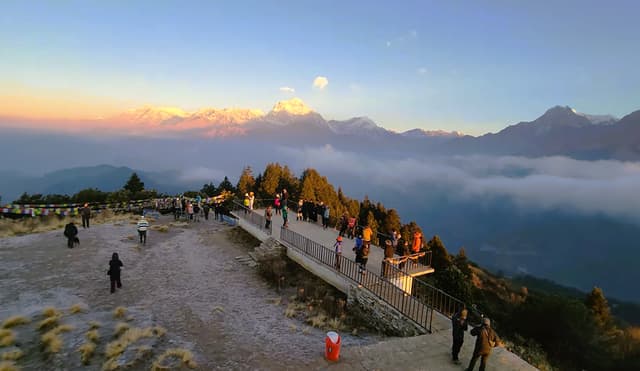
My itinerary for Poon Hill trek
Day 01: Private drive from Pokhara to Hille and trek to Ulleri
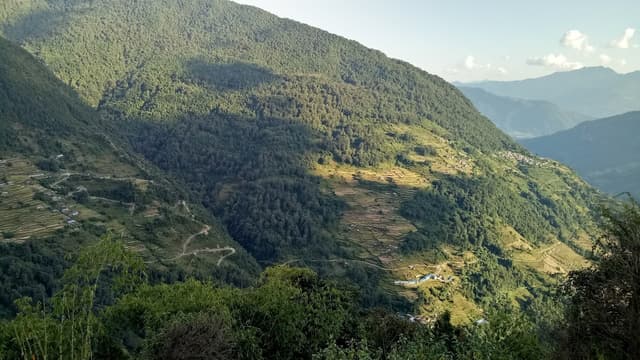
The journey begins with a drive to Hille/Nayapul, taking about 2.5 hours, followed by a three-hour trek to Ulleri. This leg sets the tone with its mild challenge, gradually acclimating you as the paths wind up to 1960 meters amidst emerald foliage.
☝🏽NOTE: A taxi will comfortably get you to the trailhead, ready for the day's trek. If haggling is not your thing, your hotel can connect you with a reliable driver.
Day 02: Trek from Ulleri to Ghorepani
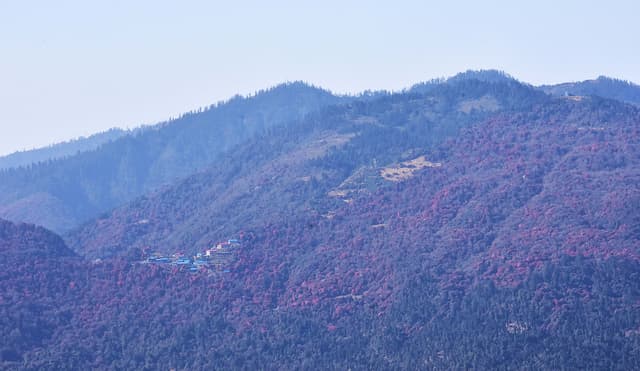
As you ascend to Ghorepani, elevation 2874 meters over five hours, prepare for breathtaking scenery. The trail becomes a vivid tapestry of rhododendrons and oak forests, often enshrouded in the morning mist like a scene from a forgotten time.
☝🏽NOTE: If you're not keen on sharing Poon Hill's sunrise with a crowd, consider a sunset visit. It's a peaceful alternative.
Day 03: Climb to Poon Hill for sunrise and trek to Tadapani


Start early to catch the sunrise from Poon Hill at an altitude 3119 meters—a highlight of the year. Post-sunrise, the trek proceeds to Tadapani, a five-hour descent through open ridgelines that offer panoramic views of the peaks.
☝🏽NOTE: Climbing up the hill before dawn requires a good headlamp. It'll make finding your way much easier and safer.
Day 04: Trek from Tadapani to Ghandruk
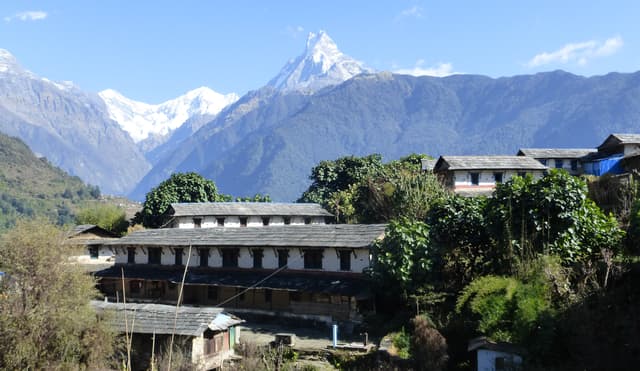
Descending to Ghandruk over four hours, the landscape shifts subtly. Ghandruk, at 1951 meters, is a traditional village where stone paths weave between ancient homes, and the local culture of the Gurung people is palpable.
Day 05: Trek from Ghandruk to Birethanti and take a taxi to Pokhara
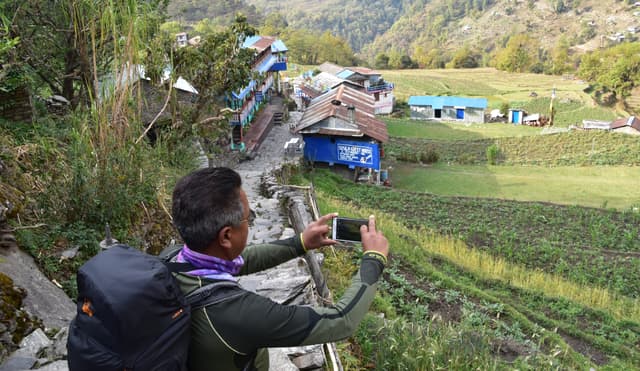
The final trekking day to Birethanti covers three hours of mostly downhill paths before returning to the bustle of Pokhara by taxi. It's a gentle wrap to the adventure, allowing time to reflect on the journey as valleys give way to urbanity.
What to Budget for Your Poon Hill Trek
When planning your adventure to Poon Hill, it's wise to consider the varying costs, which hinge largely on how you choose to travel, who you're with, what you like, and when you decide to go. To give you a clearer picture based on my own journeys, here's what you might expect to budget:
🚶Guide: Hiring a local guide will run you about $30 to $35 per day. It’s an investment in rich stories and safe paths.
🎫 Permits: Necessary for accessing these trails, permits cost around $50 each.
🛌 Accommodation per Night: Staying in guesthouses along the trail typically costs $7 to $12 nightly, a cosy enough respite after a day's trek.
🍽️Food & Drinks: Plan to spend about $20 to $25 per day on meals and hydration. The local fare is both energising and part of the experience.
🚕Transportation: A round trip in a private taxi might cost between $100 and $120, ensuring comfort and convenience to and from the trailheads.
☝🏽REMEMBER: these figures are rough estimates; it’s often wise to have a little extra tucked away for those just-in-case moments. Good planning now makes for smoother trails later.
The Best Time to Visit Poon Hill: Savouring each season
Poon Hill is accessible for trekking throughout the year.
🌸Springtime, between March and May, presents a contrasting spectacle, with the trails adorned in the vibrant hues of blooming rhododendrons—a sight to behold and rare in its beauty.
🍂In autumn, the air turns clear, unveiling the mountains in their full, magnificent glory, and painting breathtaking panoramas that captivate all who visit.
❄️Come winter, from December to February, the cold is intense, yet it brings with it a crystal-clear atmosphere, offering solitary sunrises amidst the frost.
Each season at Poon Hill unveils unique charms, inviting trekkers to experience its beauty in myriad ways.
Do You Need a Guide for Poon Hill
Starting in April 2023, a new regulation mandates that trekkers in Nepal must be accompanied by a licensed guide. This legal requirement was not strictly enforced last year, but it’s crucial to comply now.
Are you required to have a guide? Legally speaking, yes. Could you potentially trek alone? Technically, yes, but it exposes you to potential safety risks and legal penalties, including fines or being turned away.
Personally, I never trek in Nepal without a guide. The benefits are manifold—a good guide not only enriches your trek with fascinating insights but also ensures that your meals are prepared hygienically. They can also provide access to normally closed sites, like certain monasteries.
I highly recommend Sherpa Heritage Trails. They're a smaller agency but deeply committed to responsible tourism in Nepal.
They provide immersive experiences with skilled, English-speaking guides, and their pricing is fair to both travellers and their Nepali staff. Trekking with them isn't just about exploring Nepal's landscapes; it's about entering into the heart of Nepali life with someone who knows it intimately.
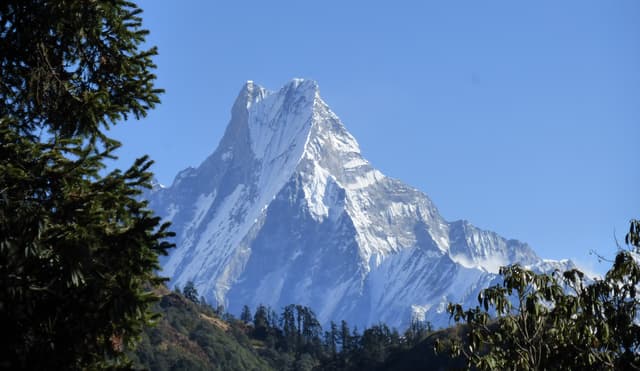
Difficulty of the Poon Hill Trek
The elevation increases by more than 3000 meters within a short timeframe, making altitude adjustment a significant hurdle to overcome. Therefore, possessing a decent level of physical fitness is recommended for those embarking on the Poon Hill adven
Necessary permits for Poon Hill
Embarking on the trek with a trusted agency means you won't have to worry about the paperwork. They take care of arranging the ACAP (Annapurna Conservation Area Permit) and TIMS (Trekking Information Management System), so you don’t have to. It’s straightforward; they’ve got it covered.
Going solo means you’ll need to dedicate a day in Kathmandu or Pokhara to visit the ACAP office for your permits. To embark on a journey through the Annapurna Conservation Area, you are required to secure an ACAP permit. This essential document is attainable prior to your trek at several locations to ensure a seamless start to your adventure:
Where to purchase your Annapurna permit
You can obtain a conservation area entry permit at:
- The Tourist Service Centre in Kathmandu
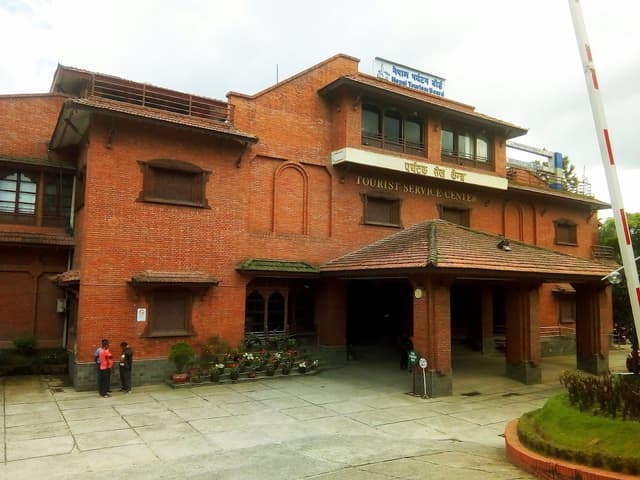
- The Annapurna Conservation Area Project (ACAP) office in Kathmandu
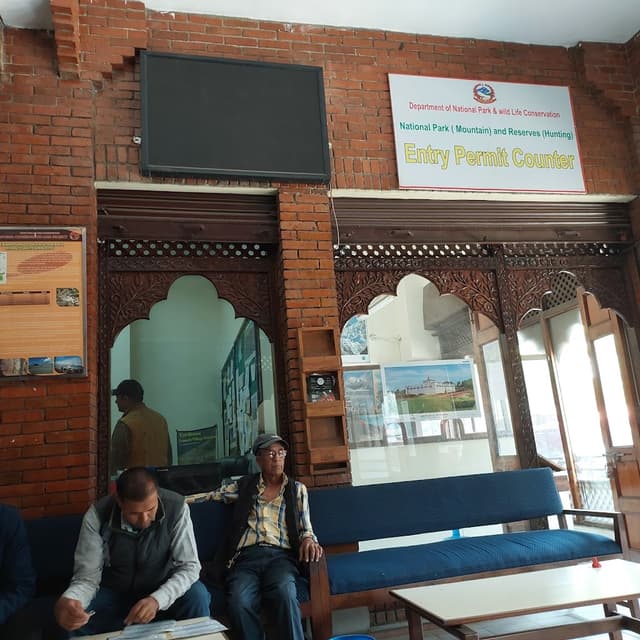
- The Annapurna Conservation Area Project (ACAP) office in Pokhara
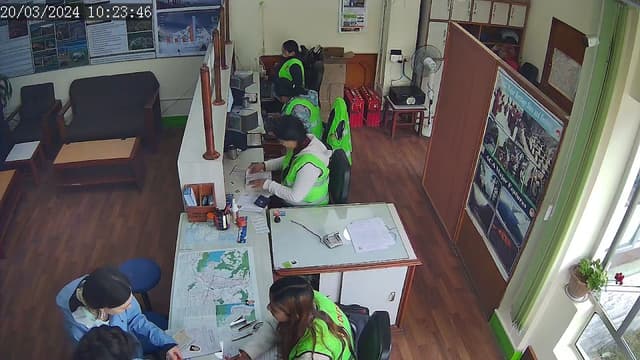
In preparation for your permit application, you must have ready:
- A detailed trekking itinerary
- Specified entry and exit dates within the conservation area
- Contact information for your tour operator, if utilised
- Details of your trekking guide, if one is accompanying you
- Two passport-sized photographs of yourself
☝🏽NOTE: While you can pay the fee at a checkpoint, you'll be charged double the usual amount. So it's better to organise it in advance at one of the above-mentioned offices.
What to Pack for Poon Hill trek
Poon Hill's trail may be brief, but a well-packed bag makes all the difference for a smooth trek. Here's a rundown of what I carry:
🥾Footwear:
- Hiking boots with ankle support
- Flip flops or sandals and or light shoes for post-trek relaxation
- Hiking socks, moisture wicking and warm (wool) hiking socks
👕Clothing:
- Thermal shirts; Light weight, long sleeve & short sleeve
- Light weight thermal bottoms
- Fleece jacket
- Softshell or wind-stopper jacket; you can also use your waterproof jacket
- Comfortable quick drying hiking pant
- Waterproof shell jacket (preferably breathable fabric)
- Waterproof shell pants (preferably breathable fabric)
- Down jacket or insulation jacket
- Sun hat or scarf
- Warm fleece hat or light balaclava
- Lightweight thermal gloves and warmer insulated wind proof gloves
- Comfortable clothes for relaxing after a rewarding day of trekking
🎒Equipment:
- Day pack (40 to 45 liters) with a rain cover
- Sleeping bag for low temperatures; you will receive a additional local blanket in your room in each teahouse
- Headlamp for early the sunrise hike and possible power outages
- Telescopic hiking poles; optional but recommended
- Quick drying towel
- Earplugs for nighttime barking dogs
- Toiletries including bio-degradable soap
- Feminine hygiene products
- Sun cream for protection from the strong mountain sun
- Sunglasses for protection from the strong mountain sun
- Toilet paper
- Water filter for a safe and eco-friendly hydration solution
- First-Aid kit: essential for minor injuries and essential medication
⚙️Miscellaneous:
- Camera or smartphone to capture the breathtaking vistas
- Power bank for charging electronic devices
- Cash in Nepali Rupee for teahouse expenses; foreign money is not excepted during treks in Nepal
- Snacks and energy bars to keep your energy levels up
☝🏽TIP: Ladies, pack a foldable basin; trust me, it's a game-changer for cleaning up after a day's hike, especially when you're faced with just a communal tap at most teahouses.
🙏🏽Found this guide useful? Consider leaving a tip on Thatch as a token of thanks.
ℹ️Consult my Pokhara guide for straight-up advice on stays and activities.
The home for unique & authentic travel
